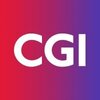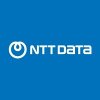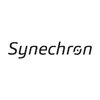Filter interviews by
Capita Software Consultant Interview Questions and Answers
33 Interview questions
Use SQL query with WHERE clause to filter out low values while fetching data from DB2 table
Use SELECT statement to fetch data from table
Add WHERE clause with condition to filter out low values
Example: SELECT * FROM table_name WHERE column_name > 10
Use ORDER BY clause to sort the data in ascending or descending order
Display values from a table with alternate value
Use a loop to iterate through the table values
Use an if-else statement to check for alternate values
Display the alternate values using a different formatting or color
Consider using CSS or JavaScript to enhance the display
Sorting using JCL and COBOL
JCL can be used to submit a COBOL program for sorting
COBOL program can use SORT verb to sort data
Sorting can be done based on specific fields or criteria
COBOL program can use SORT-RETURN to check the status of the sort operation
To write a COBOL DB2 program, you need a COBOL compiler, DB2 database, and knowledge of SQL and COBOL syntax.
Install a COBOL compiler (e.g., Micro Focus COBOL, IBM Enterprise COBOL).
Set up a DB2 database environment (e.g., IBM Db2).
Understand COBOL syntax for data definition and manipulation.
Use SQL statements within COBOL for database operations (e.g., SELECT, INSERT).
Example: Use EXEC SQL SELECT * FROM table_nam...
A controller to handle POST requests in a Spring REST API.
Create a new class annotated with @RestController
Define a method in the class annotated with @PostMapping
Use @RequestBody annotation to bind the request body to a parameter
Implement the logic to handle the POST request
Return the response using ResponseEntity
The @Transactional annotation is used in Spring JPA to manage transactions in database operations.
The @Transactional annotation is used to mark a method or class as transactional.
It ensures that all database operations within the annotated method or class are executed within a single transaction.
If an exception occurs, the transaction is rolled back, and changes made within the transaction are not persisted.
The @T...
Yes
Implemented OOPs concepts in the project using Stream API
Utilized Map in Collections to implement OOPs principles
Used Stream API to apply functional programming concepts in the project
Cursor is a database object used to manipulate data in a result set.
Cursor is used to fetch a set of rows from a result set.
It allows the application to move forward and backward through the result set.
Cursor can be declared and opened in SQL.
It can be used to update or delete rows in a result set.
Cursor can be closed explicitly or implicitly.
Annotations used in web services, pagination, exception handling in Spring
Web services in Spring can be annotated with @RestController or @Controller
Pagination can be achieved using @PageableDefault and @PageableParam
Exception handling can be done using @ExceptionHandler and @ControllerAdvice
Spring Batch is a lightweight, comprehensive framework for batch processing in Java.
Spring Batch provides reusable functions for processing large volumes of data.
It supports reading, processing, and writing data in chunks.
It includes features like transaction management, job processing, and job scheduling.
Example: Using Spring Batch to process and import large CSV files into a database.
Capita Software Consultant Interview Experiences
7 interviews found
Typical DSA questions
(1 Question)
- Q1. Expected Salary
- Ans.
I expect a salary that reflects my skills, experience, and the industry standards for a Software Consultant role.
Research industry standards: For example, Glassdoor or Payscale can provide insights into average salaries for similar roles.
Consider my experience: With over 5 years in software development, I would expect a salary in the range of $80,000 to $100,000.
Location matters: Salaries can vary significantly based o...
I applied via Company Website and was interviewed in May 2022. There was 1 interview round.
(2 Questions)
- Q1. Tell me about your self
- Q2. Tell me about your self
Interview Preparation Tips
Good company with good environment
I applied via Naukri.com
Interview Questionnaire
1 Question
- Q1. In technical - question related to react, redux, javascript
I appeared for an interview before Mar 2021.
(6 Questions)
Round duration - 60 Minutes
Round difficulty - Easy
In this round, I was first asked a simple coding question related to Recursion and then the interviewer switched the topic of discussion towards Java and OOPS and towards the end of the interview I was also asked some questions revolving around DB2 and DBMS.
- Q1.
Palindrome String Validation
Determine if a given string 'S' is a palindrome, considering only alphanumeric characters and ignoring spaces and symbols.
Note:
The string 'S' should be evaluated in a case... - Ans.
Check if a given string is a palindrome after removing special characters, spaces, and converting to lowercase.
Remove special characters and spaces from the input string
Convert the string to lowercase
Check if the modified string is a palindrome by comparing characters from start and end
- Q2. How many types of memory areas are allocated by the JVM?
- Ans.
JVM allocates 5 types of memory areas: Method Area, Heap, Stack, PC Register, and Native Method Stack.
Method Area stores class structures and static variables.
Heap is where objects are allocated.
Stack holds method-specific data and references.
PC Register stores the address of the current instruction being executed.
Native Method Stack is used for native method execution.
- Q3. How can you highlight and use a CURSOR in a COBOL program?
- Ans.
CURSOR in COBOL is used to navigate through a result set in a database program.
Declare a CURSOR in the Working-Storage section of the COBOL program
Open the CURSOR to fetch data from the database
Use FETCH statement to retrieve rows from the result set
Process the fetched data as needed
Close the CURSOR when done with the result set
- Q4. How can you find the number of rows and eliminate duplicate values in a DB2 table?
- Ans.
To find the number of rows and eliminate duplicate values in a DB2 table, you can use SQL queries.
Use the COUNT function to find the number of rows in the table.
To eliminate duplicate values, use the DISTINCT keyword in your SELECT query.
You can also use the GROUP BY clause to group rows with the same values and then use aggregate functions like COUNT to find the number of unique rows.
- Q5. What is meant by normalization and denormalization?
- Ans.
Normalization is the process of organizing data in a database to reduce redundancy and improve data integrity. Denormalization is the opposite process.
Normalization involves breaking down a table into smaller tables and defining relationships between them to reduce redundancy.
Denormalization involves combining tables to reduce the number of joins needed for queries, sacrificing some normalization benefits for performan...
- Q6. What is a correlated subquery in DBMS?
- Ans.
A correlated subquery is a subquery that references a column from the outer query, allowing for more complex filtering and data retrieval.
Correlated subqueries are executed for each row processed by the outer query.
They can be used to filter results based on values from the outer query.
Example: SELECT * FROM table1 t1 WHERE t1.column1 = (SELECT MAX(column2) FROM table2 t2 WHERE t2.column3 = t1.column3);
(8 Questions)
Round duration - 50 Minutes
Round difficulty - Medium
This round had questions primarily from Spring Boot and Java. The interviewer was quite friendly and helped me with small hints when he felt I was stuck. Overall, this round went preety well.
- Q1. What are the major differences between @RequestMapping and @GetMapping in Spring Boot?
- Ans.
Major differences between @RequestMapping and @GetMapping in Spring Boot
1. @RequestMapping can be used for all HTTP methods, while @GetMapping is specific to GET requests.
2. @RequestMapping allows for more customization with parameters like method, headers, and produces/consumes, while @GetMapping is more concise.
3. @GetMapping is a specialized version of @RequestMapping with method set to GET by default.
4. Example: @R...
- Q2. How does Spring Boot work?
- Ans.
Spring Boot is a framework that simplifies the development of Java applications by providing pre-configured settings and tools.
Spring Boot eliminates the need for manual configuration by providing defaults for most settings.
It includes embedded servers like Tomcat, Jetty, or Undertow, making it easy to run applications without deploying WAR files.
Spring Boot also offers a wide range of plugins to enhance development pr...
- Q3. How does MVC work in Spring?
- Ans.
MVC in Spring is a design pattern that separates an application into three main components: Model, View, and Controller.
Model represents the data and business logic of the application.
View is responsible for rendering the user interface based on the data from the Model.
Controller handles user input, processes requests, and updates the Model accordingly.
Spring MVC provides annotations like @Controller, @RequestMapping, ...
- Q4. What are a few features of Spring Boot?
- Ans.
Spring Boot is a framework that simplifies the development of Java applications by providing production-ready features out of the box.
Auto-configuration: Spring Boot automatically configures the application based on dependencies added to the project.
Embedded server: Spring Boot includes an embedded Tomcat, Jetty, or Undertow server for running applications without needing to deploy to a separate server.
Actuator: Built-...
- Q5. What are the features of a lambda expression?
- Ans.
Lambda expressions are anonymous functions that can be passed as arguments to methods or stored in variables.
Lambda expressions are written using the -> operator.
They can have zero or more parameters.
They can have zero or more statements.
They can be used to implement functional interfaces in Java.
Example: (a, b) -> a + b
- Q6. What are some standard Java pre-defined functional interfaces?
- Ans.
Standard Java pre-defined functional interfaces include Function, Consumer, Predicate, Supplier, etc.
Function: Represents a function that accepts one argument and produces a result. Example: Function<Integer, String>
Consumer: Represents an operation that accepts a single input argument and returns no result. Example: Consumer<String>
Predicate: Represents a predicate (boolean-valued function) of one argument...
- Q7. What is the difference between an abstract class and an interface in OOP?
- Ans.
Abstract class can have both abstract and non-abstract methods, while interface can only have abstract methods.
Abstract class can have constructors, fields, and methods, while interface cannot have any implementation.
A class can only extend one abstract class, but can implement multiple interfaces.
Abstract classes are used to define common characteristics among subclasses, while interfaces are used to define a contract...
- Q8. When can you use the super keyword?
- Ans.
The super keyword is used to refer to the parent class of a subclass.
Used to call methods or access fields from the parent class
Helps in achieving method overriding in inheritance
Can be used to call the constructor of the parent class
Round duration - 30 Minutes
Round difficulty - Easy
This was a Technical Cum HR round where I was first asked some basic Java related concepts and then we discussed
about my expectations from the company , learnings and growth in the forthcomig years. I would suggest be honest and
try to communicate your thoughts properly in these type of rounds to maximise your chances of getting selected.
Interview Preparation Tips
Tip 1 : Must do Previously asked Interview as well as Online Test Questions.
Tip 2 : Go through all the previous interview experiences from Codestudio and Leetcode.
Tip 3 : Do at-least 2 good projects and you must know every bit of them.
Tip 1 : Have at-least 2 good projects explained in short with all important points covered.
Tip 2 : Every skill must be mentioned.
Tip 3 : Focus on skills, projects and experiences more.
Skills evaluated in this interview
I appeared for an interview in Dec 2018.
Interview Questionnaire
6 Questions
- Q1. Sort using JCL and COBOL
- Ans.
Sorting using JCL and COBOL
JCL can be used to submit a COBOL program for sorting
COBOL program can use SORT verb to sort data
Sorting can be done based on specific fields or criteria
COBOL program can use SORT-RETURN to check the status of the sort operation
- Q2. Cursor in DB2
- Ans.
Cursor is a database object used to manipulate data in a result set.
Cursor is used to fetch a set of rows from a result set.
It allows the application to move forward and backward through the result set.
Cursor can be declared and opened in SQL.
It can be used to update or delete rows in a result set.
Cursor can be closed explicitly or implicitly.
- Q3. Basic requirement to write COBOLL DB2 program
- Ans.
To write a COBOL DB2 program, you need a COBOL compiler, DB2 database, and knowledge of SQL and COBOL syntax.
Install a COBOL compiler (e.g., Micro Focus COBOL, IBM Enterprise COBOL).
Set up a DB2 database environment (e.g., IBM Db2).
Understand COBOL syntax for data definition and manipulation.
Use SQL statements within COBOL for database operations (e.g., SELECT, INSERT).
Example: Use EXEC SQL SELECT * FROM table_name; EN...
- Q4. How to remove low values while fetching data from table in DB2
- Ans.
Use SQL query with WHERE clause to filter out low values while fetching data from DB2 table
Use SELECT statement to fetch data from table
Add WHERE clause with condition to filter out low values
Example: SELECT * FROM table_name WHERE column_name > 10
Use ORDER BY clause to sort the data in ascending or descending order
- Q5. How to display values fetch from a table with alternate value
- Ans.
Display values from a table with alternate value
Use a loop to iterate through the table values
Use an if-else statement to check for alternate values
Display the alternate values using a different formatting or color
Consider using CSS or JavaScript to enhance the display
- Q6. Its all about you
Interview Preparation Tips
Duration: <1 week
Skills evaluated in this interview
I applied via Naukri.com and was interviewed in Oct 2017. There were 4 interview rounds.
Interview Questionnaire
6 Questions
- Q1. Where did u implemented oops concepts in your project? Stream api, Map in Collections
- Ans.
Yes
Implemented OOPs concepts in the project using Stream API
Utilized Map in Collections to implement OOPs principles
Used Stream API to apply functional programming concepts in the project
- Q2. Usage of @Transactional annotation in spring JPA
- Ans.
The @Transactional annotation is used in Spring JPA to manage transactions in database operations.
The @Transactional annotation is used to mark a method or class as transactional.
It ensures that all database operations within the annotated method or class are executed within a single transaction.
If an exception occurs, the transaction is rolled back, and changes made within the transaction are not persisted.
The @Transa...
- Q3. Write controller to serve POST request for a rest call in spring
- Ans.
A controller to handle POST requests in a Spring REST API.
Create a new class annotated with @RestController
Define a method in the class annotated with @PostMapping
Use @RequestBody annotation to bind the request body to a parameter
Implement the logic to handle the POST request
Return the response using ResponseEntity
- Q4. Again technical discussion focused on Spring MVC, spring Boot annotations, hibernate mapping, caching, restfull webservices
- Q5. Annotations used in web services, pagination, exception handling in spring
- Ans.
Annotations used in web services, pagination, exception handling in Spring
Web services in Spring can be annotated with @RestController or @Controller
Pagination can be achieved using @PageableDefault and @PageableParam
Exception handling can be done using @ExceptionHandler and @ControllerAdvice
- Q6. Salary discussion. They will explain about policies, about project etc
Interview Preparation Tips
Pros: Management needs to focus more on motivating teams. Transport should be provided
Duration: <1 week
Skills evaluated in this interview
I appeared for an interview before Apr 2021.
(6 Questions)
Round duration - 60 Minutes
Round difficulty - Medium
In this round, I was first asked a simple coding question related to stack and recursion followed by an SQL query. After this, I was grilled on some fundamental concepts of Java, OOPS and Java 8.
- Q1.
Reverse Stack with Recursion
Reverse a given stack of integers using recursion. You must accomplish this without utilizing extra space beyond the internal stack space used by recursion. Additionally, you ...
- Ans.
Reverse a given stack of integers using recursion without using extra space or loop constructs.
Use recursion to pop all elements from the original stack and store them in function call stack.
Once the stack is empty, push the elements back in reverse order using recursion.
Make use of the top(), pop(), and push() stack methods provided.
- Q2. How do you combine two tables in SQL?
- Ans.
Use the SQL JOIN clause to combine two tables based on a related column.
Use the JOIN clause to specify the columns from each table that should be used for the join
Common types of joins include INNER JOIN, LEFT JOIN, RIGHT JOIN, and FULL JOIN
Example: SELECT * FROM table1 JOIN table2 ON table1.column = table2.column
- Q3. How many types of memory areas are allocated by the JVM?
- Ans.
JVM allocates 5 types of memory areas: Method Area, Heap, Stack, PC Register, and Native Method Stack.
Method Area stores class structures, method data, and runtime constants.
Heap is where objects are allocated and garbage collected.
Stack stores method-specific data and local variables.
PC Register holds the address of the JVM instruction currently being executed.
Native Method Stack is used for native method execution.
- Q4. What are some standard Java pre-defined functional interfaces?
- Ans.
Standard Java pre-defined functional interfaces include Function, Consumer, Predicate, Supplier, etc.
Function: Represents a function that accepts one argument and produces a result.
Consumer: Represents an operation that accepts a single input argument and returns no result.
Predicate: Represents a predicate (boolean-valued function) of one argument.
Supplier: Represents a supplier of results.
- Q5. What are the features of a lambda expression?
- Ans.
Lambda expressions are anonymous functions that can be passed as arguments to methods or stored in variables.
Lambda expressions are concise and do not require a name.
They can be used to implement functional interfaces.
They can capture variables from their enclosing scope.
Syntax: (parameters) -> expression or (parameters) -> { statements; }
Example: (int a, int b) -> a + b
- Q6. What are the advantages of using the Optional class in Java?
- Ans.
Optional class in Java provides a way to handle null values more effectively.
Prevents NullPointerException by explicitly checking for null values
Encourages developers to handle null values properly
Provides methods like isPresent(), ifPresent(), orElse() for better null value handling
Improves code readability and maintainability
Example: Optional<String> optionalString = Optional.ofNullable(str);
(7 Questions)
Round duration - 60 Minutes
Round difficulty - Medium
This round was majorly inclined towards Spring Boot and Hibernate and the questions can be answered only if you have some prior experience in working with these tech stacks.
- Q1. Can you explain Spring Actuator and its advantages?
- Ans.
Spring Actuator is a set of production-ready features to help monitor and manage your application.
Provides insight into application's health, metrics, and other useful information
Enables monitoring and managing of application in real-time
Helps in identifying and troubleshooting issues quickly
Can be easily integrated with other monitoring tools like Prometheus or Grafana
- Q2. What is the use of the @Transactional annotation in Spring JPA?
- Ans.
The @Transactional annotation in Spring JPA is used to manage transactions in database operations.
Ensures that a method is executed within a transaction context
Rolls back the transaction if an exception is thrown
Controls the transaction boundaries
- Q3. What is Spring Batch?
- Ans.
Spring Batch is a lightweight, comprehensive framework for batch processing in Java.
Spring Batch provides reusable functions for processing large volumes of data.
It supports reading, processing, and writing data in chunks.
It includes features like transaction management, job processing, and job scheduling.
Example: Using Spring Batch to process and import large CSV files into a database.
- Q4. What are the @RequestMapping and @RestController annotations used for in Spring Boot?
- Ans.
The @RequestMapping annotation is used to map web requests to specific handler methods, while @RestController is used to define RESTful web services.
The @RequestMapping annotation is used to map HTTP requests to specific handler methods in a controller class.
It can be used to specify the URL path, HTTP method, request parameters, headers, and media types for the mapping.
Example: @RequestMapping(value = "/hello", method...
- Q5. Can you explain the difference between setMaxResults() and setFetchSize() in a Query?
- Ans.
setMaxResults() limits the number of results returned by a query, while setFetchSize() sets the number of rows to fetch in each round trip to the database.
setMaxResults() is used to limit the number of results returned by a query.
setFetchSize() sets the number of rows to fetch in each round trip to the database.
setMaxResults() is typically used for pagination purposes.
setFetchSize() can improve performance by reducing ...
- Q6. What are the concurrency strategies available in Hibernate?
- Ans.
Hibernate provides several concurrency strategies like optimistic locking, pessimistic locking, and versioning.
Optimistic locking: Allows multiple transactions to read a row simultaneously, but only one can update it. Uses versioning or timestamp to check for conflicts.
Pessimistic locking: Locks the row for exclusive use by one transaction, preventing other transactions from accessing it until the lock is released.
Vers...
- Q7. Can you explain briefly about the Session interface used in Hibernate?
- Ans.
Session interface in Hibernate is used to create, read, update, and delete persistent objects.
Session interface is used to interact with the database in Hibernate.
It represents a single-threaded unit of work.
It is lightweight and designed to be instantiated each time an interaction with the database is needed.
Session interface provides methods like save, update, delete, get, load, etc.
Example: Session session = session...
(2 Questions)
Round duration - 30 Minutes
Round difficulty - Easy
This is a cultural fitment testing round. HR was very frank and asked standard questions. Then we discussed about my
role.
- Q1. What is something about you that is not included in your resume?
- Q2. Why should we hire you?
Interview Preparation Tips
Tip 1 : Must do Previously asked Interview as well as Online Test Questions.
Tip 2 : Go through all the previous interview experiences from Codestudio and Leetcode.
Tip 3 : Do at-least 2 good projects and you must know every bit of them.
Tip 1 : Have at-least 2 good projects explained in short with all important points covered.
Tip 2 : Every skill must be mentioned.
Tip 3 : Focus on skills, projects and experiences more.
Skills evaluated in this interview
Top trending discussions






Interview questions from similar companies

Interview Questionnaire
5 Questions
- Q1. Oops,program on oops concepts,collection related examples. Hibernate and spring related questions
- Q2. Logical programs String related
- Q3. Managerial round Most of the questions asked on java, jQuery, java script and hibernate
- Q4. Spring annotations Discussion on previous project
- Q5. Introduction Skills related Salary discussion

Interview Preparation Tips

Interview Questionnaire
1 Question
- Q1. Core java
Capita Interview FAQs
Some of the top questions asked at the Capita Software Consultant interview -
Tell us how to improve this page.
Capita Interviews By Designations
- Capita Customer Service Executive Interview Questions
- Capita Software Consultant Interview Questions
- Capita Senior Executive Interview Questions
- Capita Team Manager Interview Questions
- Capita Back Office Executive Interview Questions
- Capita Financial Analyst Interview Questions
- Capita Process Leader Interview Questions
- Capita Analyst Interview Questions
- Show more
Interview Questions for Popular Designations
- Software Developer Interview Questions
- Software Engineer Interview Questions
- Senior Engineer Interview Questions
- Consultant Interview Questions
- System Engineer Interview Questions
- Senior Associate Interview Questions
- Associate Consultant Interview Questions
- Senior Consultant Interview Questions
- Show more
Overall Interview Experience Rating
based on 1 interview experience
Top Skills for Capita Software Consultant
Interview Questions from Similar Companies
Capita Software Consultant Reviews and Ratings
based on 58 reviews
Rating in categories
|
Senior Executive
1.1k
salaries
| ₹2 L/yr - ₹6.5 L/yr |
|
Softwaretest Engineer
606
salaries
| ₹3 L/yr - ₹6.5 L/yr |
|
Senior Software Consultant
519
salaries
| ₹14.4 L/yr - ₹26.5 L/yr |
|
Software Consultant
375
salaries
| ₹4.9 L/yr - ₹13.9 L/yr |
|
Customer Service Executive
374
salaries
| ₹2.4 L/yr - ₹7 L/yr |

Cognizant

DXC Technology

Optum Global Solutions

CGI Group
- Home >
- Interviews >
- Capita Interview Questions














